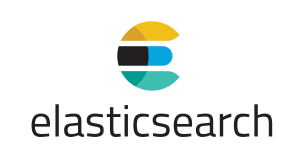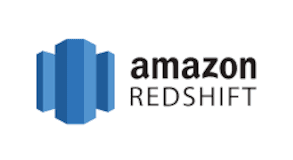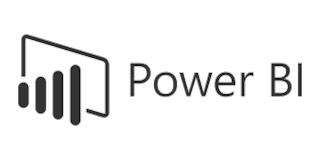Data engineering is a rapidly growing field that plays a crucial role in managing and analyzing the vast amounts of data generated by businesses and organizations. With the rise of big data and the increasing importance of data-driven decision making, data engineers are in high demand. To help you stay ahead of the curve, we’ve compiled a list of the top 17 best data engineering tools of 2023.
In this article, we’ll provide a comprehensive overview of each tool, including its key features, pros, and cons. Whether you’re a seasoned data engineer or just starting out, this article will provide valuable insights into the tools that are shaping the future of data engineering.
We also love when data engineering tools are open-source data engineering tools.
Dont forget to check out or list of the Best Data Engineering Certification programs that you can take online to further your career.
Top Data Engineering Tools Ranked
Data engineering is a complex and multifaceted field that involves everything from collecting and storing data to processing, analyzing, and visualizing it. The tools and technologies used by data engineers are constantly evolving, and it can be challenging to keep up with the latest developments.
However, by understanding the most popular and widely-used data engineering tools, you’ll be well-positioned to make informed decisions about the technology stack you choose for your next project.

Our Ranking Critera for Data Engineering Tools
Popularity and adoption: How widely used and well-known is the tool in the data engineering community, and how quickly is it gaining popularity and adoption?
Versatility: How flexible and versatile is the tool, and how well does it integrate with other tools and technologies?
Ease of use: How user-friendly and accessible is the tool, and how quickly can a new user become proficient with it? Open source data engineering tools are looked for here.
Performance: How well does the tool perform in terms of speed, scalability, and reliability, and how well does it handle large amounts of data?
Integration with other tools: How well does the tool integrate with other data engineering and analysis tools, and how seamless is the data transfer between these tools?
Community and resources: How strong is the community of users and developers around the tool, and how readily available are resources such as documentation, tutorials, and forums for learning and troubleshooting?
Relevance to current trends: How relevant is the tool to current trends and needs in data engineering, such as big data processing, data streaming, cloud computing, and machine learning?
Here is our list of data engineering tools:
1. Apache Spark
Apache Spark is a powerful, open-source data processing framework for big data processing, machine learning, and data streaming. It was created to handle large-scale data processing requirements and provides an efficient and scalable platform for data processing.
Apache Spark comes in at #1 for our best tools for data engineering.
Why Apache Spark?
Apache Spark is important for data engineers to know and learn because it provides a fast and efficient platform for large-scale data processing. Its versatility and ability to handle a wide range of data processing tasks make it a valuable tool for many data engineering projects.
Features:
- Batch processing: Spark supports batch data processing for large-scale data sets.
- Stream processing: Spark also supports stream processing for real-time data processing.
- SQL: Spark provides an integrated SQL interface for querying and manipulating data.
- Machine learning: Spark includes built-in support for machine learning algorithms and models.
- Graph processing: Spark provides a graph processing engine for graph-based data processing tasks.
Pros:
- Fast data processing: Spark’s in-memory architecture allows for fast data processing speeds.
- Versatile: Spark supports a wide range of data processing tasks, making it a flexible tool for many data engineering projects.
- Scalable: Spark is designed for scalable data processing, allowing for smooth growth as data grows.
- Large community: Spark has a large and active community of users and developers, providing support and expertise.
Cons:
- Difficult setup: Setting up and configuring Spark can be challenging and requires a strong understanding of distributed systems.
- Resource-intensive: Spark requires significant computing resources, which may be challenging for smaller or less powerful systems.
- Additional tools needed: Spark may require additional tools and technologies, such as a cluster management framework, for effective management of large-scale data processing workloads.
2. Apache Airflow
Apache Airflow is an open-source workflow management platform for automating and orchestrating data pipelines. It helps data engineers build, schedule, and monitor complex data workflows in a simple and scalable manner.
Airflow comes in at #2 in our ranking of data engineering tools.
Why Apache Airflow?
Airflow is an essential tool for data engineers as it provides a centralized platform for managing and automating complex data pipelines. It helps improve the efficiency and reliability of data processing and enables organizations to make better use of their data.
Features:
- Task orchestration: The platform allows users to define, execute, and monitor a series of tasks as a workflow.
- Dynamic Workflow Generation: Airflow allows users to dynamically generate workflows based on runtime information.
- Extensible: Airflow has a large and active community of contributors who have developed numerous plugins to extend the functionality of the platform.
- Web UI: Airflow provides a web-based user interface that allows users to monitor and manage their workflows.
Pros:
- Scalable: Airflow can handle large and complex workflows and can scale to meet the demands of growing organizations.
- Flexible: The platform is highly flexible and can be used to automate a wide range of data processing tasks.
- User-friendly: Airflow’s web UI makes it easy to monitor and manage data pipelines, even for non-technical users.
- Open-source: Airflow is open-source, which means it is free to use and has a large and active community of contributors.
Cons:
- Steep learning curve: Airflow can be complex to set up and configure, especially for users who are new to the platform.
- Maintenance overhead: Airflow requires ongoing maintenance to keep it running smoothly and to ensure that it is up-to-date with the latest features.
- Limited integrations: Although Airflow has a large number of plugins, it may not have direct integrations with all of the tools that data engineers need to use.
3. Snowflake
Snowflake is a cloud-based data warehousing solution designed for modern data warehousing and analytics. It offers a flexible and scalable architecture that allows organizations to store and analyze vast amounts of data quickly and easily. Snowflake’s unique architecture separates storage and compute, allowing organizations to scale compute and storage independently, providing unparalleled flexibility and cost savings.
Snowflake is #3 on data engineering tools ranking list.
Why Snowflake?
Snowflake is important for data engineers to know and learn because it provides a cloud-based solution for modern data warehousing and analytics that is flexible, scalable, and cost-effective. Its unique architecture separates storage and compute, providing organizations with unparalleled flexibility and cost savings.
Features:
- Separate storage and compute: Snowflake separates storage and compute, allowing organizations to scale storage and compute independently.
- Cloud-based: Snowflake is cloud-based, allowing organizations to store and analyze vast amounts of data in the cloud.
- Support for multiple data sources: Snowflake supports multiple data sources, including structured, semi-structured, and unstructured data.
- Multi-cluster and multi-node: Snowflake supports multi-cluster and multi-node deployments for high availability and scalability.
Pros:
- Flexible and scalable architecture: Snowflake’s architecture separates storage and compute, allowing organizations to scale and adjust resources as needed.
- Cloud-based: Snowflake is cloud-based, allowing organizations to store and analyze vast amounts of data in the cloud.
- Cost-effective: Snowflake’s unique architecture provides cost savings compared to traditional data warehousing solutions.
- Ease of use: Snowflake offers an easy-to-use interface, making it accessible to users of all skill levels.
Cons:
- Dependency on cloud: Snowflake is a cloud-based solution, meaning organizations must have a strong and reliable internet connection.
- Vendor lock-in: Snowflake is a proprietary solution, meaning organizations may be locked into using the Snowflake platform.
- Limited customization options: Snowflake offers limited customization options compared to traditional data warehousing solutions.
4. Elasticsearch
Elasticsearch is a popular, open-source search and analytics engine. It is used for storing, searching, and analyzing large volumes of structured and unstructured data. Elasticsearch is designed to be fast, flexible, and scalable, making it a popular choice for a wide range of data engineering and data analysis tasks.
At #4 of our ranking of data engineering tools, Elasticsearch is a relatively new addition.
Why Elasticsearch?
Elasticsearch is important for data engineers to know and learn because it provides a powerful platform for data search and analysis. Its ability to handle large volumes of data and its fast and flexible architecture make it a valuable tool for many data engineering projects.
Features:
- Real-time search and analytics: Elasticsearch supports real-time search and analytics on large data sets.
- Distributed architecture: Elasticsearch is designed as a distributed system, allowing for horizontal scaling and high availability.
- Flexible data storage: Elasticsearch supports a wide range of data types, including structured, unstructured, and semi-structured data.
- Cluster management: Elasticsearch includes built-in tools for managing and monitoring clusters of nodes.
Pros:
- Fast search and analysis: Elasticsearch’s fast and flexible architecture enables fast search and analysis of large data sets.
- Scalable: Elasticsearch is designed for scalable data processing, allowing for smooth growth as data grows.
- Flexible data storage: Elasticsearch supports a wide range of data types, making it a flexible tool for many data engineering projects.
- Cluster management: Elasticsearch includes built-in tools for managing and monitoring clusters of nodes, simplifying cluster management.
Cons:
- Complex configuration: Setting up and configuring Elasticsearch can be complex and requires a strong understanding of distributed systems.
- Resource-intensive: Elasticsearch can be resource-intensive, requiring significant computing resources for large-scale data sets.
- Limited SQL support: While Elasticsearch supports SQL-like queries, its support for SQL is limited compared to traditional relational databases.
5. Google BigQuery
Google BigQuery is a cloud-based, fully-managed data warehousing and analytics platform provided by Google Cloud. It is designed to handle large amounts of data with ease, offering fast querying and real-time analytics. BigQuery supports SQL-like querying and integrates with other Google Cloud services for additional data analysis capabilities.
What would a breakdown of data engineering tools be without Google BigQuery on the list? It comes in at #5.
Why Google BigQuery?
Google BigQuery is important for data engineers to know and learn because of its ability to handle large amounts of data and provide fast querying and real-time analytics. This makes it a valuable tool for data warehousing and large-scale data analysis projects.
Features:
- Cloud-based: BigQuery is a fully-managed cloud service, removing the need for hardware and infrastructure management.
- Fast querying: BigQuery offers fast querying capabilities, allowing for real-time analytics.
- SQL support: BigQuery supports SQL-like querying, making it accessible to many data analysts and data engineers.
- Integration with other Google Cloud services: BigQuery integrates with other Google Cloud services, such as Google Data Studio, for additional data analysis and visualization capabilities.
Pros:
- Scalability: BigQuery is designed to handle large amounts of data, making it a scalable solution for growing data needs.
- Cost-effective: BigQuery is a cost-effective solution, with flexible pricing options and no infrastructure costs.
- Fast querying: BigQuery’s fast querying capabilities allow for real-time analytics.
- User-friendly: BigQuery is user-friendly, with a simple and intuitive interface for data analysis and visualization.
Cons:
- Dependence on Google Cloud: BigQuery is a part of the Google Cloud ecosystem, which may not be suitable for all organizations.
- Data privacy concerns: Storing data in the cloud can raise privacy and security concerns for some organizations.
- Limited customization: BigQuery has limited customization options, which may not meet the needs of all organizations and use cases.
6. PostgreSQL
PostgreSQL is a powerful, open-source relational database management system (RDBMS) widely used for data storage and management. It offers robust and flexible data storage and retrieval capabilities, along with advanced data management features such as indexing, query optimization, and data integrity.
Why PostgreSQL?
PostgreSQL is important for data engineers to know and learn as it is a widely used and versatile RDBMS. It offers the ability to store and manage large amounts of structured data and is particularly well suited for complex and high-demand data management tasks.
Features:
- Robust data storage: Supports a wide range of data types and provides advanced data management features such as transactions, indexes, and constraints.
- Query optimization: Offers a variety of advanced query optimization techniques, including cost-based query optimization, index-based optimization, and materialized views.
- Scalable architecture: Can be easily scaled horizontally to support large amounts of data and high user concurrency.
- Advanced data management: Supports advanced data management features, including backup and recovery, data replication, and partitioning.
Pros:
- Open-source: PostgreSQL is open-source and free to use, making it a cost-effective solution for many data management tasks.
- Flexible: Offers a wide range of data types, making it well suited for complex data management tasks.
- Scalable: Can be easily scaled horizontally to support large amounts of data and high user concurrency.
- Strong community: Has a large and active community of developers and users, providing support and expertise.
Cons:
- Steep learning curve: PostgreSQL can be challenging to learn and use for those unfamiliar with relational database management.
- Resource-intensive: Can be resource-intensive, particularly for high-performance data management tasks, requiring significant computing resources.
- Limited out-of-the-box performance tuning: PostgreSQL may require additional performance tuning and optimization to achieve desired performance levels.
7. Prometheus
Prometheus is an open-source monitoring and alerting system that is widely used for monitoring cloud-native applications and infrastructure. It is designed to collect and store time-series data and make it easily accessible and queryable.
Prometheus is often paired with Grafana, a visualization and analytics platform, to create a comprehensive monitoring solution.
Promethues is #7 on our data engineering tools list.
Why Prometheus?
Prometheus is important for data engineers to know and learn because it provides a reliable and effective way to monitor the performance of cloud-native applications and infrastructure. It is designed to be highly scalable and can handle a large volume of time-series data, making it a valuable tool for monitoring large-scale systems.
Features:
- Time-series data collection and storage: Prometheus collects and stores time-series data from various sources and makes it easily accessible for querying.
- Alerting: Prometheus includes built-in alerting capabilities that can notify operators of critical issues in real-time.
- Query language: Prometheus has its own query language, PromQL, which makes it easy to retrieve and analyze the collected data.
- Service discovery: Prometheus supports various service discovery mechanisms to automatically detect and monitor target systems.
Pros:
- Scalable: Prometheus is designed to be highly scalable, making it well-suited for monitoring large-scale systems.
- Customizable: Prometheus is highly customizable, allowing users to tailor it to their specific monitoring requirements.
- Open-source: Prometheus is open-source software, making it readily accessible to a large community of users and developers.
- Large ecosystem: Prometheus has a large ecosystem of integrations and extensions, providing a wealth of additional functionality.
Cons:
- Complexity: Prometheus can be complex to set up and configure, especially for large-scale deployments.
- Resource-intensive: Prometheus can be resource-intensive, especially when dealing with large amounts of time-series data.
- Limited visualization: Prometheus does not have built-in visualization capabilities, requiring a separate tool such as Grafana for visualizing the data.
8. Grafana
Grafana is an open-source platform for data visualization and analytics that is widely used for monitoring and alerting. It allows users to create and share interactive dashboards and alerts based on a wide range of data sources, including Prometheus.
Grafana provides a comprehensive solution for monitoring and analyzing time-series data, making it a valuable tool for data engineers and operations teams.
At #8 on our reviews of data engineernt tools, Grafana is a real game changer.
Why Grafana?
Grafana is important for data engineers to know and learn because it provides a flexible and user-friendly platform for visualizing and analyzing time-series data. It integrates with a wide range of data sources, making it a valuable tool for monitoring and analyzing diverse data sets.
Features:
- Data visualization: Grafana provides a range of visualizations and dashboards for time-series data analysis.
- Alerting: Grafana includes built-in alerting capabilities, allowing users to create and manage alerts based on data trends and thresholds.
- Integrations: Grafana integrates with a wide range of data sources, including Prometheus, making it a flexible solution for monitoring and analytics.
- Sharing and collaboration: Grafana allows users to share and collaborate on visualizations and dashboards, making it a valuable tool for team-based workflows.
Pros:
- Flexible: Grafana provides a flexible platform for visualizing and analyzing time-series data.
- Wide range of data source support: Grafana supports a wide range of data sources, allowing data engineers to easily connect to their systems.
- User-friendly: Grafana has a user-friendly interface that makes it easy to create and share dashboards.
- Alerting: Grafana’s built-in alerting capabilities make it easy to monitor the health and performance of systems.
Cons:
- Limited data processing: Grafana is primarily focused on data visualization and monitoring, and does not provide advanced data processing capabilities.
- Limited scalability: Grafana may not be able to handle very large data sets or high-traffic loads.
- Dependency on data source: Grafana is dependent on the quality and reliability of the data source, and may not provide accurate results if the data source is incorrect or unreliable.
9. Apache Kafka
Apache Kafka is a distributed, publish-subscribe messaging system that is designed for high-throughput, real-time data streams. It is commonly used for processing real-time data from various sources, such as logs, sensors, and social media feeds. Kafka provides a high-throughput, low-latency platform for handling real-time data streams, making it a popular choice for data engineers and data scientists.
Why Apache Kafka?
Apache Kafka is important for data engineers to know and learn because it provides a reliable, scalable platform for real-time data processing. Its ability to handle high-throughput, low-latency data streams make it a valuable tool for many data engineering projects.
Features:
- Distributed: Kafka is designed as a distributed system, allowing for horizontal scalability and high availability.
- Publish-subscribe messaging: Kafka uses a publish-subscribe messaging model for data processing, allowing for separation of producers and consumers of data.
- Real-time: Kafka is designed for real-time data processing, providing low latency and high throughput for real-time data streams.
- Durable: Kafka stores data durably, allowing for fault tolerance and data persistence.
Pros:
- Scalable: Kafka’s distributed architecture allows for horizontal scalability, allowing it to handle large volumes of data.
- High throughput: Kafka is designed for high-throughput data processing, making it a fast and efficient platform for real-time data streams.
- Low latency: Kafka provides low latency data processing, making it suitable for real-time data processing tasks.
- Reliable: Kafka is designed for reliability and durability, making it a dependable platform for data processing.
Cons:
- Complex setup: Setting up and configuring a Kafka cluster can be complex and requires a strong understanding of distributed systems.
- Steep learning curve: Kafka has a steep learning curve and requires a strong understanding of its architecture and components.
- Resource-intensive: Kafka requires significant computing resources, which may be challenging for smaller or less powerful systems.
- Limited data format support: Kafka has limited data format support, requiring the use of additional tools for processing data in different formats.
10. Amazon Redshift
Amazon Redshift is a fast, simple, and cost-effective data warehousing solution provided by Amazon Web Services (AWS). It is designed for analyzing big data sets and supports a wide range of data sources, including structured, semi-structured, and unstructured data.
With its scalable architecture and support for cloud computing, Amazon Redshift has become a popular choice for data engineers and data scientists.
Redshift comes in at #10 for data engineering tools this year.
Why Amazon Redshift
Amazon Redshift is important for data engineers to know and learn because it provides a cost-effective and scalable platform for data warehousing and analysis. With its integration with other AWS services and support for a wide range of data sources, Redshift makes it easy to process, store, and analyze large amounts of data.
Features:
- Scalable architecture: Amazon Redshift is designed to scale up and down as needed, making it easy to handle large data sets.
- Integration with other AWS services: Amazon Redshift integrates with other AWS services, such as S3, EC2, and RDS, making it easy to manage data processing workflows.
- Support for a wide range of data sources: Amazon Redshift supports a wide range of data sources, including structured, semi-structured, and unstructured data.
- Cost-effective: Amazon Redshift is a cost-effective solution for data warehousing and analysis, especially when compared to other traditional data warehousing solutions.
Pros:
- Scalable: Amazon Redshift can easily handle large data sets and can scale up and down as needed.
- Integration with other AWS services: Amazon Redshift integrates with other AWS services, making it easy to manage data processing workflows.
- Cost-effective: Amazon Redshift is a cost-effective solution for data warehousing and analysis.
- Easy to use: Amazon Redshift is designed to be simple and easy to use, even for users with limited data warehousing experience.
Cons:
- Limited customizability: Amazon Redshift has limited customizability options compared to other data warehousing solutions.
- Dependent on AWS: Amazon Redshift is dependent on the AWS ecosystem, which may not be suitable for users who prefer to use other cloud providers or on-premise solutions.
- Potential for vendor lock-in: Using Amazon Redshift can lead to vendor lock-in, as users may become dependent on AWS services for data processing and storage.
- Higher latency for real-time data processing: Amazon Redshift may have higher latency for real-time data processing compared to other solutions.
11. DBT (Data Build Tool)
DBT (Data Build Tool) is an open-source data transformation tool designed for data engineers and data analysts. It helps automate data transformation processes by providing a high-level programming language to write transformations and a command line interface for executing them. DBT leverages existing SQL skills and can integrate with a variety of data stores, making it a versatile and powerful tool for data engineering.
Why DBT (Data Build Tool)
DBT is important for data engineers to know and learn because it provides a tool for automating and streamlining data transformation processes. It can reduce the time and effort required to manually perform transformations, making data engineering workflows more efficient and scalable.
Features:
- Data Modeling: DBT enables data engineers to build, maintain and manage their data models.
- SQL Transformation: DBT provides a way to write, manage and run efficient SQL code for data analysis and data integration.
- Data Quality: DBT provides a suite of tools to ensure data quality and consistency across the organization.
- Monitoring: DBT provides a way to monitor and track the state of data models, ensuring they are up to date.
- Version Control: DBT supports version control of data models, making it easier to manage changes and revert to previous versions if necessary.
Pros:
- Improved Data Quality: DBT helps to improve the quality and consistency of data analysis.
- Efficient SQL Code: DBT provides a way to write, manage, and run efficient SQL code for data analysis and data integration.
- Scalable and Maintainable: DBT provides a scalable and maintainable solution for data modeling.
- Version Control: DBT supports version control, making it easier to manage changes and revert to previous versions if necessary.
- Comprehensive Suite of Tools: DBT provides a comprehensive suite of tools to ensure data quality and consistency across the organization.
Cons:
- Steep Learning Curve: DBT can have a steep learning curve, especially for those unfamiliar with SQL and data modeling.
- Complex Setup: Setting up and configuring DBT can be complex and may require a strong understanding of SQL and data modeling concepts.
- Dependent on SQL: DBT is heavily dependent on SQL, which may not be ideal for those who prefer a more graphical or visual approach to data modeling.
- Resource-Intensive: DBT can be resource-intensive, especially for large and complex data models, requiring significant computing resources.
12. Apache Hive
Apache Hive is an open-source data warehousing and analytics framework built on top of Hadoop. It provides a SQL-like interface for querying and manipulating large data sets stored in Hadoop Distributed File System (HDFS) or other storage systems. Hive is designed for batch processing and allows for efficient and scalable data processing for large data sets.
Why Apache Hive?
Apache Hive is important for data engineers to know and learn because it provides a high-level, SQL-like interface for working with big data. With its scalability and ability to handle large data sets, Hive is a valuable tool for data warehousing and big data analytics.
Features:
- SQL-like interface: Hive provides a SQL-like interface for querying and manipulating data stored in HDFS or other storage systems.
- Scalability: Hive is designed for scalable data processing, allowing for efficient handling of large data sets.
- Batch processing: Hive is optimized for batch processing and is suitable for large-scale data warehousing and analytics.
- Integration with Hadoop: Hive is built on top of Hadoop and integrates seamlessly with other Hadoop components.
Pros:
- High-level interface: Hive’s SQL-like interface makes it easy for users with SQL experience to work with big data.
- Scalability: Hive’s scalability makes it suitable for large-scale data warehousing and analytics.
- Integration with Hadoop: Hive’s integration with Hadoop allows for seamless integration with other Hadoop components.
- Large community: Hive has a large and active community of users and developers, providing support and expertise.
Cons:
- Performance limitations: Hive’s performance can be limited by its batch-oriented processing model and its reliance on MapReduce.
- Complex setup: Setting up and configuring Hive can be complex and may require a strong understanding of Hadoop and distributed systems.
- Limited functionality: Compared to other big data tools, Hive may have limited functionality, especially in areas such as real-time data processing.
13. Looker
Looker is a modern data analytics and business intelligence platform designed to help organizations unlock the full potential of their data. With its intuitive interface and powerful data exploration and visualization capabilities, Looker makes it easy for businesses of all sizes to understand and act on their data. Looker integrates with a wide range of data sources and platforms, making it a versatile and flexible tool for data engineers and data analysts.
Why Looker?
Looker is important for data engineers and data analysts to know and learn because it provides a comprehensive platform for data analysis and visualization. Its user-friendly interface and powerful capabilities make it a valuable tool for organizations looking to gain insights from their data and make data-driven decisions.
Features:
- Data exploration and visualization: Looker provides a rich set of data exploration and visualization capabilities, allowing users to easily create and share interactive reports and dashboards.
- Data integration: Looker integrates with a wide range of data sources, including databases, cloud platforms, and file systems, making it a versatile tool for data analysis.
- Data modeling: Looker includes a robust data modeling layer, allowing users to create and manage their own custom data models.
- Collaboration: Looker provides collaboration and sharing features, making it easy for teams to work together and share insights.
Pros:
- Intuitive interface: Looker’s user-friendly interface makes it easy for users to quickly understand and act on their data.
- Powerful data exploration and visualization: Looker provides a rich set of data exploration and visualization capabilities, making it a valuable tool for data analysis and decision making.
- Integrated with multiple data sources: Looker integrates with a wide range of data sources, making it a versatile tool for data analysis and integration.
- Collaboration and sharing: Looker’s collaboration and sharing features make it easy for teams to work together and share insights.
Cons:
- Steep learning curve: Looker’s interface and capabilities may be challenging for users who are new to data analysis and visualization.
- Expensive: Looker’s license fees may be cost-prohibitive for smaller organizations or individuals.
- Data governance: Looker’s collaboration and sharing features may introduce data governance concerns, requiring additional security and management controls.
- Limited scalability: Looker’s scalability may be limited for large-scale data analysis projects or for organizations with high data volume requirements.
14. Tableau
Tableau is a powerful data visualization and business intelligence tool used for creating interactive and informative dashboards, reports, and charts. It helps organizations unlock insights from their data, allowing them to make informed decisions and improve their business operations. Tableau offers a wide range of features and functionalities, including data visualization, data exploration, data analysis, and data sharing
Why Tableau?
Tableau is important for data engineers to know and learn because it provides a powerful platform for visualizing and exploring data. With its intuitive interface and wide range of features, Tableau makes it easy for users to extract insights from their data and communicate those insights to others.
Features:
- Data visualization: Tableau allows users to create a wide range of data visualizations, including charts, graphs, maps, and dashboards.
- Data exploration: Tableau’s data exploration features make it easy for users to discover new insights and relationships within their data.
- Data analysis: Tableau provides a range of data analysis tools, including calculations, aggregations, and trend lines, to help users understand their data.
- Data sharing: Tableau allows users to share their insights and visualizations with others through its web-based platform and mobile app.
Pros:
- Intuitive interface: Tableau’s drag-and-drop interface makes it easy for users to create visualizations and explore their data.
- Wide range of features: Tableau offers a wide range of features and functionalities, making it a versatile tool for data visualization and exploration.
- Strong community: Tableau has a strong and active community of users and developers, providing support and resources for users.
- Robust data connection: Tableau supports a wide range of data sources, making it easy for users to connect and work with their data.
Cons:
- Cost: Tableau can be expensive for some organizations, especially for larger teams or those with more advanced needs.
- Steep learning curve: Tableau can be complex and require a steep learning curve for some users, especially for those without a background in data analysis or visualization.
- Limited data manipulation: Tableau’s data manipulation capabilities are limited compared to other data engineering tools, which may be a drawback for some users.
15. Segment
Segment is a customer data platform (CDP) that provides a single source of customer data for businesses. It allows organizations to centralize customer data from various sources, such as websites, mobile apps, and marketing tools, and make this data available to various teams and systems within the company. By providing a unified view of customer data, Segment helps organizations make better data-driven decisions and improve their customer experiences.
Why Segment?
Segment is important for data engineers to know and learn because it provides a solution for managing customer data and making it available to different teams and systems within an organization. This makes it easier for organizations to leverage customer data to make better data-driven decisions and improve customer experiences.
Features:
- Centralized customer data: Segment centralizes customer data from various sources, providing a single source of truth for customer data within an organization.
- Integrations: Segment integrates with a wide range of tools and platforms, making it easy to collect and manage customer data.
- Customer data pipelines: Segment provides data pipelines for transferring customer data from source to destination, ensuring data consistency and accuracy.
- Event tracking: Segment allows organizations to track events related to customer interactions and behavior.
- Privacy and security: Segment provides robust privacy and security features to ensure that customer data is protected and secure.
Pros:
- Improved customer data management: Segment provides a centralized and unified view of customer data, making it easier for organizations to manage and leverage this data.
- Improved data-driven decision-making: By providing a single source of truth for customer data, Segment helps organizations make better data-driven decisions and improve customer experiences.
- Integrations: Segment integrates with a wide range of tools and platforms, making it easy to collect and manage customer data.
- Event tracking: Segment allows organizations to track and analyze customer events and behavior, providing valuable insights into customer behavior and preferences.
Cons:
- Cost: Segment can be expensive, particularly for larger organizations with a high volume of customer data.
- Complexity: Segment may be challenging to set up and configure, particularly for organizations with complex data structures and requirements.
- Dependency on integrations: Segment relies on integrations with other tools and platforms to collect and manage customer data, which may limit its capabilities and flexibility.
16. Power BI
Power BI is a data visualization and business intelligence tool developed by Microsoft. It enables data engineers, data analysts, and business users to analyze, visualize, and share data insights in a self-service fashion. Power BI integrates with various data sources, including on-premises, cloud, and big data, to provide a comprehensive and flexible solution for data analysis and reporting.
Why Power BI?
Power BI is an important tool for data engineers and other data professionals to know and learn because of its ability to provide powerful and flexible data analysis and reporting capabilities in a user-friendly interface. This allows users to quickly and easily explore, understand, and communicate data insights to make informed decisions.
Features:
- Data integration: Power BI integrates with various data sources, including on-premises, cloud, and big data, to provide a comprehensive solution for data analysis and reporting.
- Data visualization: Power BI provides a variety of data visualization options, including charts, tables, maps, and more, to help users communicate data insights in an impactful way.
- Data exploration: Power BI provides interactive data exploration capabilities that allow users to dive into data and find insights quickly and easily.
- Data sharing: Power BI makes it easy to share data insights with others, including publishing interactive reports to the Power BI service or embedding them in other applications.
Pros:
- User-friendly interface: Power BI provides a user-friendly interface that makes it easy for data engineers and business users to analyze and visualize data.
- Flexible data integration: Power BI integrates with a wide range of data sources, making it a flexible solution for data analysis and reporting.
- Powerful data visualization: Power BI provides a variety of data visualization options that help users communicate data insights in an impactful way.
- Easy data sharing: Power BI makes it easy to share data insights with others, helping to ensure that decision-makers have access to the data they need.
- Free for individual users: Desktop version of Power BI is free and a great place to start exploring the tool.
Cons:
- Limited data customization: While Power BI provides a wide range of data visualization options, some users may find that they are limited in terms of customizing their reports and dashboards to meet their specific needs.
- Cost: Power BI organisation licenses can be expensive, especially for larger organizations with a large number of users.
- Learning curve: Power BI has a steep learning curve, especially for those who are new to data visualization and business intelligence tools.
17. Azure Data Factory
Azure Data Factory is a cloud-based data integration service that enables data engineers to automate and orchestrate the movement and transformation of data from various sources to Azure data stores, such as Azure Data Lake Storage or Azure SQL Database. With a visual interface and a code-free approach, Azure Data Factory makes it easy to create, schedule, and manage data pipelines that can be used for big data processing and analysis.
Why Azure Data Factory?
Azure Data Factory is an important tool for data engineers to know and learn because it provides a scalable and efficient platform for automating and orchestrating data pipelines in the cloud. This helps to streamline data integration and reduces the time and effort required to manage and maintain data pipelines.
Features:
- Visual interface: Azure Data Factory provides a visual interface for creating and managing data pipelines.
- Code-free approach: Azure Data Factory allows data engineers to create and manage data pipelines without writing code.
- Cloud-based: Azure Data Factory is a cloud-based service, which means data engineers can access and manage data pipelines from anywhere with an internet connection.
- Multiple data sources: Azure Data Factory supports a wide range of data sources, including on-premises databases, cloud-based data stores, and SaaS applications.
- Data transformation: Azure Data Factory includes built-in data transformation capabilities, making it easy to clean, shape, and transform data as part of the data pipeline process.
- Scheduling: Azure Data Factory allows data engineers to schedule data pipelines to run on a recurring basis, such as daily, weekly, or monthly.
- Monitoring: Azure Data Factory provides monitoring and logging capabilities to help data engineers monitor the health and performance of data pipelines.
Pros:
- Scalable: Azure Data Factory is a scalable solution, making it easy to manage and process large amounts of data.
- Efficient: Azure Data Factory helps to streamline data integration and reduces the time and effort required to manage and maintain data pipelines.
- Visual interface: The visual interface makes it easy for data engineers to create and manage data pipelines, even if they have limited coding experience.
- Cloud-based: Being cloud-based, Azure Data Factory allows data engineers to access and manage data pipelines from anywhere with an internet connection.
- Built-in transformation: The built-in data transformation capabilities help to clean, shape, and transform data as part of the data pipeline process.
Cons:
- Limited customization: The visual interface and code-free approach can limit customization options for data pipelines.
- Dependent on Azure: Azure Data Factory is dependent on Azure, so data engineers need to have access to Azure in order to use it.
- Cost: Azure Data Factory can be more expensive than other data integration solutions, especially for larger data processing needs.
Data Engineering Tools Frequently Asked Questions (FAQ’s)
What are data engineering tools?
Data engineering tools are software applications and platforms that help data engineers and other professionals manage, process, and analyze large volumes of data. These tools enable efficient data ingestion, extraction, transformation, loading (ETL), and integration, as well as data storage, querying, and visualization.
2Why are data engineering tools important?
Data engineering tools are crucial in today’s data-driven world, as they enable organizations to handle vast amounts of data, uncover valuable insights, and make data-driven decisions. By using these tools, companies can optimize their data workflows, automate repetitive tasks, ensure data quality and consistency, and ultimately, drive business growth and innovation.
How do I choose the right data engineering tool for my needs?
When selecting a data engineering tool, consider factors such as:
- The size and complexity of your data
- The specific tasks you need to perform (e.g., data ingestion, transformation, or visualization)
- Integration with existing systems and technologies in your organization
- Scalability and performance requirements
- Ease of use and learning curve
- Budget and licensing costs
- Community and support resources available
Are open-source data engineering tools reliable?
Yes, many open-source data engineering tools are reliable, widely-used, and actively maintained by a community of developers. Open-source tools often offer the advantage of being free or low-cost, highly customizable, and transparent in their development process. However, it’s essential to assess each tool based on its specific features, community support, and compatibility with your organization’s needs.
How do data engineering tools differ from data analytics tools?
Data engineering tools primarily focus on the management and processing of data, enabling the efficient ingestion, storage, and transformation of large volumes of data. In contrast, data analytics tools are designed to analyze and visualize data, helping users uncover insights and trends that inform decision-making. While there is some overlap between the two categories, data engineering tools are generally more focused on the technical aspects of handling data, whereas data analytics tools cater to data analysis and interpretation.
Can data engineering tools help improve data quality?
Yes, many data engineering tools include features to help ensure data quality, such as data validation, cleansing, and deduplication. By using these tools, organizations can identify and resolve data issues, such as missing or inconsistent values, duplicates, and outliers. As a result, the data used for analysis and decision-making is more accurate, reliable, and valuable.
Are data engineering tools suitable for non-technical users?
Some data engineering tools are designed with non-technical users in mind, offering intuitive user interfaces, drag-and-drop functionality, and visual programming capabilities. However, many data engineering tasks require a certain level of technical expertise, so it’s essential to assess each tool’s learning curve and ease of use based on your team’s skills and knowledge. In some cases, it may be necessary to invest in training or collaborate with data engineering professionals to make the most of these tools.
Ben is a full-time data leadership professional and a part-time blogger.
When he’s not writing articles for Data Driven Daily, Ben is a Head of Data Strategy at a large financial institution.
He has over 14 years’ experience in Banking and Financial Services, during which he has led large data engineering and business intelligence teams, managed cloud migration programs, and spearheaded regulatory change initiatives.
















